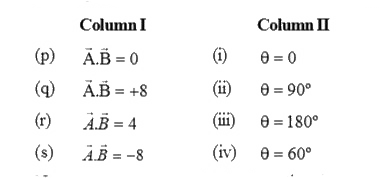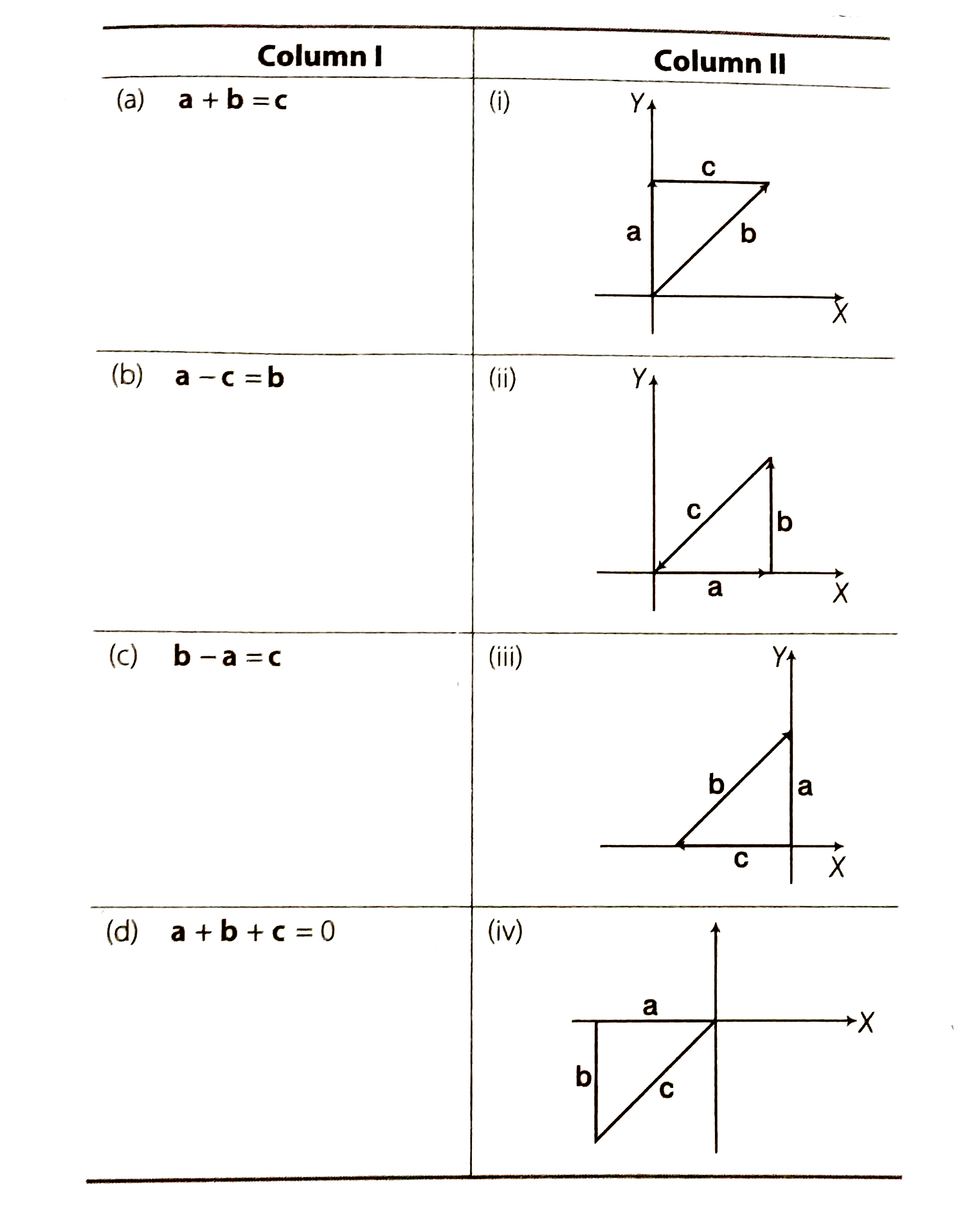If ∣∣→A∣∣=2and∣∣→B∣∣=4, then match the relations in column I with the angleθ between →Aand→B in column II.
Column I, Column II
(a) ∣∣→A×→B∣∣=0 , (i) θ=30∘
(b) ∣∣→A×→B∣∣=0 , (ii) θ=45∘
(c ) →A×→B∣=4 , (iii) θ=90∘
(d) ∣∣→A×x→B∣∣=4√2 , (iv) θ=0∘.
Given |A|=2 and |B|=4
(a) |A×B|=ABsinθ=0 ⇒ 2×4×sinθ=0
⇒ sinθ=0=sin0∘ ⇒ θ=0∘
∴ Option (a) matches with option (iv).
(b) |A×B|=ABsinθ=8 ⇒ 2×4sinθ=8
⇒ sinθ=1=sin90∘ ⇒ θ=90∘
∴ Option (b) matches with option (iii).
(c) |A×B|=ABsinθ=4 ⇒ 2×4sinθ=4
⇒sinθ=12=sin30∘ ⇒ θ=30∘
∴ Option (c) matches with option (i).
(d) |A×B|=ABsinθ=4√2 ⇒ 2×4sinθ=4√2
⇒ sinθ=1√2=sin45∘ ⇒ θ=45∘
∴ Option (d) matches with option (ii).
Topper's Solved these Questions
Similar Questions
If ∣∣→A∣∣=2and∣∣→B∣∣=4 , then match the relations in colum I with theange θ between →Aand→B in column II.
Column I , Column II
(a) →A.→B=0 , (i) θ =0<br>(b) vec A . Vec B= + 8,(ii) theta =90^@<br>(c) vec A .vec B =4,(iii) theta =180^@<br>(d) vec A .vec B =- 8,(iv) theta =60^@.
View SolutionWhat is the angle between (vec A+ vec B) and (vec A xx vec B) ?
View Solution
Knowledge Check
IF ∣∣→A∣∣=2 and ∣∣→B∣∣=4, then match the relation in Column I with the angle θ between A and B in Column II.

Now, mark the correct above choice from the given codes :Ap-ii, q-i, r-iv,s-iiiBp-iv, q-iii,r-i,s-iiCp-I,q-iii,e-iv,s-iiDp-iii, q-iv, r-i ,s-iiIf →A⋅→B=0and→A×→C=0, then the angle between B and C is
A0B45∘C90∘D60∘If the angle between the vectors →Aand→B is θ, the value of the product (→B×→A)⋅→A is equal to
ABA2sinθBBA2cosθCBA2sinθcosθDzero
If the ratio of →A.→B and ∣∣→A×→B∣∣ is √3, then the angle between the vectors →A and →B is _____.
View SolutionIf →A.→B=∣∣→A×→B∣∣,f∈dthevalueof∠between vec A and vec B.
View SolutionGiven below in Column I are the relations between vectors a,b and c and in Column II are the orientations of a, b and c in the XY - plane . Match the relation in Column I to correct orientations in Column II.

View SolutionDefine →ax→b and prove that ∣∣→ax→b∣∣=(→a.→btanθ, where θ is the angle between →a and →b .
View SolutionIf ∣∣→A∣∣=2,∣∣→B∣∣=5 and ∣∣→A×→B∣∣=8, din the value of (vec A. vec B0.
View Solution
